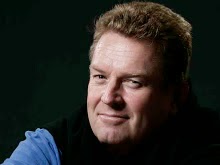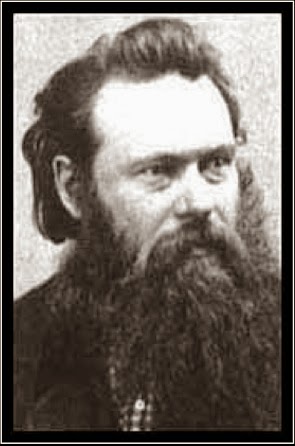Research on types of studio photograhpy
Bob Martin- action

Bob Martin is famous for his photography in the athletic field, capturing many shots in competitive events and the players involved. Bob specializes in action shots, mostly in the sports arena. He has photographed every single Olympic games since 1998.Bob Martins photographs have been published in many places such as sports Illustrated magazines, New York Times, The Sunday Times, Life Magazine Time and many more. Bob Martin is the only current photographer based outside the United States, being in his own home country, England. Bob Martin has been awarded over 53 national and international awards. In 2005, Bob was lucky enough to get award the 'Sports picture of the year'. In 2005 alone, Bob won 23 awards. Bob Martin has won the British sports photographer of the year three times. After 20 years of professional photography, Bob Martin has definitely achieved some great things, from experiencing the Olympics to becoming a multi award winner.


Dennis Peterson- still life

Of Armenian descent, Dennis Peterson was one of the first photo realists to emerge in New York. He is widely acknowledged as the pioneer and primary architect of hyper realism, which was founded on the aesthetic principles of photo realism. Dennis Peterson distinguished hyper realism from photo realism making meticulous changes to works depth of field, colour, and composition in order to emphasize a socially conscious message about contemporary culture and politics. Peterson has often utilized the hyper realism painting style as a phenomenological vehicle for social change. In his work 'dust to dust', Peterson asserts that a man of negligible social status who inhabits the lowest stratum of society is just as worthy of having his portrait painted as any titled individual or famous person, and, more importantly just as deserving of having his humanity recognised.
Alexander Gardner

Alexander Gardner become an apprentice jeweller at the age of fourteen, lasting seven year. He was influenced by the work of Robert Owen, Welsh socialist and father of the co-operative movement. In 1850, Gardner and others purchased land near Monona, Iowa, for this purpose, but Gardner never lived there, choosing to return to Scotland to raise more money. He stayed there until 1856, becoming owner and editor of the Glasgow sentinel in 1851. Visiting The Great Exhibition in 1851 in Hyde park, London, he saw the photography of American Matthew Brady, and this began his interests in the subject. Gardner and his family immigrated to the united states in 1856. He initiated contact with Brady and come to work for him that year, continuing until 1862. At first, Gardner specialized in making large photographic prints, called Imperial photographs, but as Brady's eyesight began to fail, Gardner took on increasing responsibilities. In 1858, Brady put him in charge of his Washington, D,C. gallery.
 Bob Martin is famous for his photography in the athletic field, capturing many shots in competitive events and the players involved. Bob specializes in action shots, mostly in the sports arena. He has photographed every single Olympic games since 1998.Bob Martins photographs have been published in many places such as sports Illustrated magazines, New York Times, The Sunday Times, Life Magazine Time and many more. Bob Martin is the only current photographer based outside the United States, being in his own home country, England. Bob Martin has been awarded over 53 national and international awards. In 2005, Bob was lucky enough to get award the 'Sports picture of the year'. In 2005 alone, Bob won 23 awards. Bob Martin has won the British sports photographer of the year three times. After 20 years of professional photography, Bob Martin has definitely achieved some great things, from experiencing the Olympics to becoming a multi award winner.
Bob Martin is famous for his photography in the athletic field, capturing many shots in competitive events and the players involved. Bob specializes in action shots, mostly in the sports arena. He has photographed every single Olympic games since 1998.Bob Martins photographs have been published in many places such as sports Illustrated magazines, New York Times, The Sunday Times, Life Magazine Time and many more. Bob Martin is the only current photographer based outside the United States, being in his own home country, England. Bob Martin has been awarded over 53 national and international awards. In 2005, Bob was lucky enough to get award the 'Sports picture of the year'. In 2005 alone, Bob won 23 awards. Bob Martin has won the British sports photographer of the year three times. After 20 years of professional photography, Bob Martin has definitely achieved some great things, from experiencing the Olympics to becoming a multi award winner.

 Of Armenian descent, Dennis Peterson was one of the first photo realists to emerge in New York. He is widely acknowledged as the pioneer and primary architect of hyper realism, which was founded on the aesthetic principles of photo realism. Dennis Peterson distinguished hyper realism from photo realism making meticulous changes to works depth of field, colour, and composition in order to emphasize a socially conscious message about contemporary culture and politics. Peterson has often utilized the hyper realism painting style as a phenomenological vehicle for social change. In his work 'dust to dust', Peterson asserts that a man of negligible social status who inhabits the lowest stratum of society is just as worthy of having his portrait painted as any titled individual or famous person, and, more importantly just as deserving of having his humanity recognised.
Of Armenian descent, Dennis Peterson was one of the first photo realists to emerge in New York. He is widely acknowledged as the pioneer and primary architect of hyper realism, which was founded on the aesthetic principles of photo realism. Dennis Peterson distinguished hyper realism from photo realism making meticulous changes to works depth of field, colour, and composition in order to emphasize a socially conscious message about contemporary culture and politics. Peterson has often utilized the hyper realism painting style as a phenomenological vehicle for social change. In his work 'dust to dust', Peterson asserts that a man of negligible social status who inhabits the lowest stratum of society is just as worthy of having his portrait painted as any titled individual or famous person, and, more importantly just as deserving of having his humanity recognised.  Alexander Gardner become an apprentice jeweller at the age of fourteen, lasting seven year. He was influenced by the work of Robert Owen, Welsh socialist and father of the co-operative movement. In 1850, Gardner and others purchased land near Monona, Iowa, for this purpose, but Gardner never lived there, choosing to return to Scotland to raise more money. He stayed there until 1856, becoming owner and editor of the Glasgow sentinel in 1851. Visiting The Great Exhibition in 1851 in Hyde park, London, he saw the photography of American Matthew Brady, and this began his interests in the subject. Gardner and his family immigrated to the united states in 1856. He initiated contact with Brady and come to work for him that year, continuing until 1862. At first, Gardner specialized in making large photographic prints, called Imperial photographs, but as Brady's eyesight began to fail, Gardner took on increasing responsibilities. In 1858, Brady put him in charge of his Washington, D,C. gallery.
Alexander Gardner become an apprentice jeweller at the age of fourteen, lasting seven year. He was influenced by the work of Robert Owen, Welsh socialist and father of the co-operative movement. In 1850, Gardner and others purchased land near Monona, Iowa, for this purpose, but Gardner never lived there, choosing to return to Scotland to raise more money. He stayed there until 1856, becoming owner and editor of the Glasgow sentinel in 1851. Visiting The Great Exhibition in 1851 in Hyde park, London, he saw the photography of American Matthew Brady, and this began his interests in the subject. Gardner and his family immigrated to the united states in 1856. He initiated contact with Brady and come to work for him that year, continuing until 1862. At first, Gardner specialized in making large photographic prints, called Imperial photographs, but as Brady's eyesight began to fail, Gardner took on increasing responsibilities. In 1858, Brady put him in charge of his Washington, D,C. gallery.



No comments:
Post a Comment